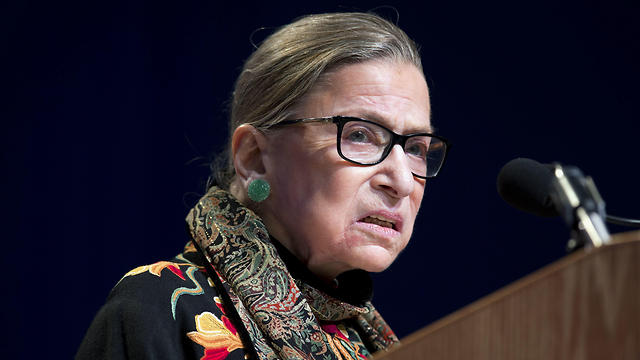Normally, the US Supreme Court begins its term on the first Monday in October, but this year, arguments will be delayed until Tuesday with three of the eight justices being Jewish. This is the first time in 25 years that the court begins a term missing a justice as Obama’s pick—also Jewish Judge Merrick Garland—is being refused a hearing by Senate Republicans.
WASHINGTON — The US Supreme Court is opening an unusual term in an unusual way.
The justices meet in public Monday for the first time since June with one seat on the nine-member court empty since the death of Justice Antonin Scalia. It is the first time in 25 years the court has been at less than full strength at the start of a term, on the first Monday in October as prescribed by federal law.
The court also will diverge from its usual practice of hearing cases on its first day because of the Jewish holiday of Rosh Hashanah. Three of the eight justices, Ruth Bader Ginsburg, Stephen Breyer and Elena Kagan, are Jewish.

The court is expected to reject hundreds of appeals that accumulated over its long summer recess. Last week, the justices accepted eight new cases.
Arguments are scheduled to begin on Tuesday.
But the justices will have to wait for the presidential election on Nov. 8 to have a sense of who might join them as the ninth justice. President Barack Obama has nominated Judge Merrick Garland, who is also Jewish, but Senate Republicans have refused to take any action, saying the next president should fill the Scalia seat.

The court’s calendar so far has no blockbuster cases like those of recent years dealing with health care, marriage equality and abortion rights. It does have a church’s challenge to its exclusion from a Missouri state program to provide rubberized surfaces in playgrounds, a dispute over whether disparaging names can receive trademark protection from the government, two redistricting cases involving the rights of minority voters and two appeals from death row inmates in Texas.
The Missouri case about the separation of church and state was granted while Scalia was still alive and has yet to be scheduled for argument, possibly because the justices think they may divide 4-4. Tie votes leave the lower court decision in place, but set no national legal rule and essentially waste the justices’ time.

The rights of transgender people, immigration, climate change, voter identification and religious freedom are among other cases the court might consider later in the term. These are the sorts of issues that have split the court along ideological lines before.
The other big looming issue is when one or more of the older justices might retire. Ruth Bader Ginsburg is 83 and has said she will take it a year at a time. She could find herself in a newly powerful role if Democrat Hillary Clinton is elected, making her less likely to step down, said Thomas Goldstein, an attorney who argues regularly at the court.
The two other older justices are Stephen Breyer, 78, and Anthony Kennedy, who turned 80 this summer. He might see his influence diminish on a more liberal court.
As reported by Ynetnews
